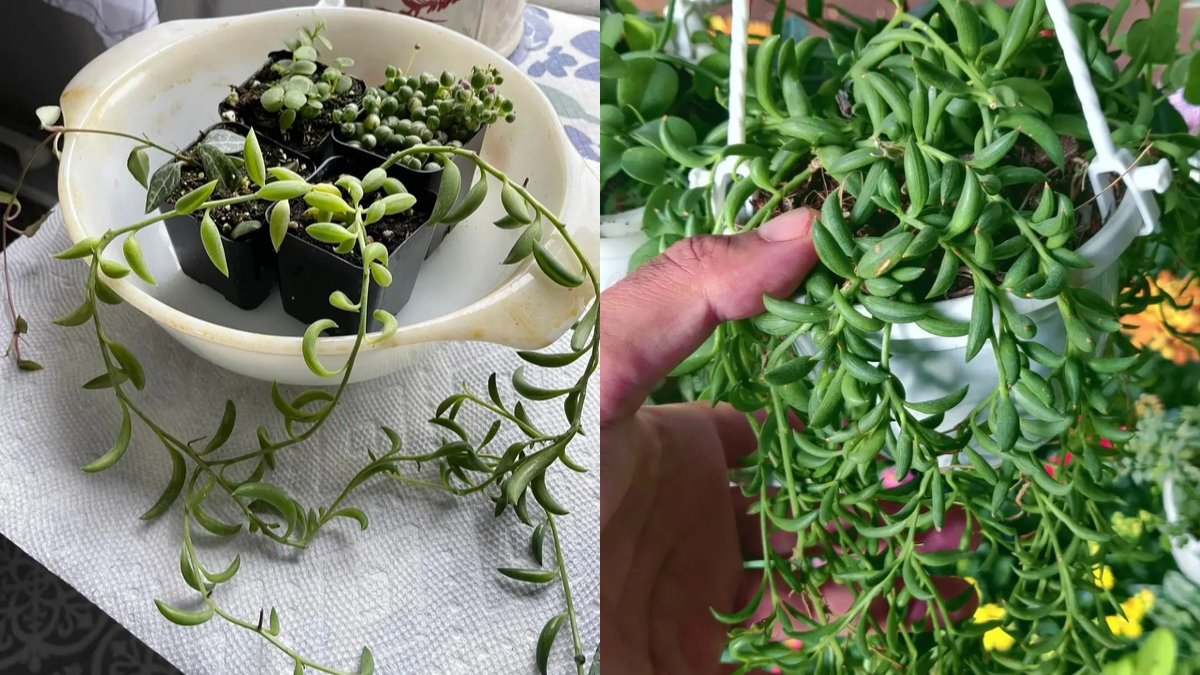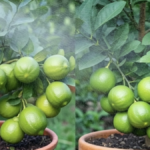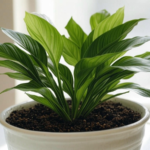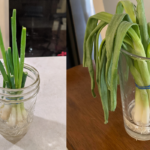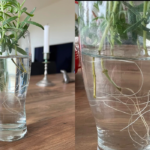How to Propagate String of Bananas Plant is one of the most common questions plant lovers ask because this trailing succulent is both beautiful and easy to multiply. The good news is, string of bananas propagates quickly with just a small cutting, and you can create new plants for free at home. Whether you want to grow them in hanging baskets, share them with friends, or simply make your collection fuller, propagation is the best way.
I have grown and propagated string of bananas many times in my gardening journey, and today I will share my simple and proven methods with you. Using these steps, you can successfully multiply your plant and enjoy healthy growth without any confusion.
Quick Propagation Tips
- Always select healthy green stems free from pests and damage.
- Let your cuttings dry and callus for at least 1–2 days before planting.
- You can root in soil or water, but soil is faster for long-term growth.
- Place the pot in bright but indirect light.
- Keep the soil lightly moist until roots develop, then water less often.
How to Propagate String of Bananas Plant
There are mainly three methods to propagate this plant:
- Soil propagation from cuttings
- Water propagation from cuttings
- Division method (from root ball)
Let’s go through each method with detailed steps and tips.
1. Soil Propagation (Most Common Method)
This is the most reliable method and the one I use the most. The plant adapts quickly and continues growing without stress.
Step 1: Choose a Healthy Stem
- Pick a stem that is at least 4–6 inches long and has several banana-shaped leaves.
- Avoid using old, woody, or dried stems. Younger stems root faster.
Step 2: Make a Clean Cut
- Use a sharp sterilized pair of scissors or pruning shears.
- Cut just below a node (the small joint where leaves grow). This is where roots will form.
Step 3: Remove Lower Leaves
- Gently strip off 2–3 leaves from the bottom part of the cutting.
- This creates a bare stem section that can go into the soil.
- Be careful not to damage the nodes, as these nodes are where new roots will sprout.
Step 4: Let the Cutting Callus
- Place the cutting on a dry tray or paper towel in a shady spot for 24–48 hours.
- This step is important because it seals the cut and reduces the chance of rot when placed in soil.
Step 5: Prepare the Soil Mix
- Use a succulent or cactus mix.
- For best results, mix:
- 2 parts succulent soil / cactus soil
- 1 part sand or perlite (for extra drainage)
- 1 part cocopeat or compost (for some organic matter)
Step 6: Plant the Cutting
You can plant in two ways:
- Vertical planting: Insert the cut end of the stem directly into the soil.
- Laying flat: Lay the cutting flat on the soil surface and pin it lightly using a paper clip or bobby pin. This way, multiple nodes touch the soil and produce roots, giving you a fuller plant.
Step 7: Water Lightly
- Mist the soil gently, just enough to make it slightly moist.
- Never soak the soil at this stage, as excess water can cause rot.
Step 8: Provide Light and Warmth
- Place the pot in a location with bright indirect sunlight.
- Avoid harsh midday sun, which can burn tender cuttings.
- Within 3–4 weeks, roots will begin to form.
2. Water Propagation
This method is fun because you can watch the roots grow. It’s also great for beginners who want visible progress.
Step 1: Take a Stem Cutting
- Cut a healthy 4–6 inch stem just as in the soil method.
- Make sure it has several nodes and leaves.
Step 2: Remove Leaves from Bottom Nodes
- Remove 2–3 leaves from the lower part of the cutting.
- This ensures only bare nodes are submerged in water.
Step 3: Place in Water
- Use a clean glass jar and fill it with filtered or boiled-cooled water.
- Place the cutting so that the nodes are under water but leaves stay above water.
Step 4: Change Water Regularly
- Replace the water every 3–4 days to prevent bacterial growth and rotting.
- Keep the jar in bright indirect light (like a sunny window sill).
Step 5: Wait for Roots to Develop
- In about 2–3 weeks, you will see tiny white roots emerging from the nodes.
- Once roots are about 1–2 inches long, it’s time to move the cutting into soil for stronger growth.
3. Propagation by Division
If your string of bananas is already full and spilling over the pot, you can simply divide it into smaller sections.
Step 1: Remove the Plant from the Pot
- Carefully take the plant out of its pot without damaging roots.
Step 2: Separate the Root Ball
- Look for natural sections of the root system that can be separated.
- Use your hands or a clean knife to divide into two or more portions.
Step 3: Replant Each Section
- Place each section into a separate pot with succulent soil.
- Gently press soil around roots and water lightly.
Step 4: Provide Proper Care
- Keep in indirect light and allow roots to settle.
- This method gives you instant full plants without waiting for rooting.
Best Time to Propagate
- Spring and summer are the best seasons for propagation.
- During these months, the plant is actively growing and cuttings root faster.
- Avoid winter propagation, as growth slows and chances of rot increase.
Care After Propagation
Once you have propagated, give your new cuttings the right care so they thrive:
- Watering: Keep the soil slightly moist for the first 2–3 weeks, then reduce watering. Allow soil to dry out between waterings.
- Light: Place in bright indirect sunlight. Too much direct sun can burn young cuttings.
- Soil: Always use fast-draining succulent mix.
- Temperature: Keep between 18–27°C (65–80°F). Avoid frost.
- Fertilizer: After 6–8 weeks, feed with a diluted succulent fertilizer once a month to boost growth.
My Personal Gardening Experience
When I first propagated string of bananas, I used both soil and water methods. Soil propagation gave me faster results, and the plants adjusted well after rooting. Water propagation looked exciting, but once I transferred the cuttings to soil, they took extra time to adapt.
Now, I mostly use the lay flat on soil method, where I keep multiple nodes in contact with soil. This makes the plant bushier from the start, instead of having one thin stem growing.
FAQs – Propagate String of Bananas Plant
Can string of bananas grow from a single leaf?
No. Unlike some succulents, it does not propagate from a single leaf. You need a stem cutting with nodes.
How long does it take to root?
Usually 3–4 weeks in soil and about 2–3 weeks in water.
Should I use rooting hormone?
It’s optional. The plant roots easily without it, but rooting hormone can help speed up the process.
Can I propagate outdoors?
Yes, if the climate is warm and soil is well-draining. Protect from heavy rains.
Why are my cuttings rotting?
This usually happens if you overwater or don’t let the cuttings dry before planting.
Conclusion
Propagating string of bananas is a simple, low-cost, and highly rewarding process. Whether you choose soil, water, or division, you can multiply your plant easily with just a little care. Always start with healthy cuttings, allow them to callus, and use well-draining soil. With patience and proper care, you will soon enjoy a lush, trailing plant that continues to grow beautifully.
String of Pearls Plant Care with my experience
How to Propagate Blueberry from Seeds (My Gardening Experience)
